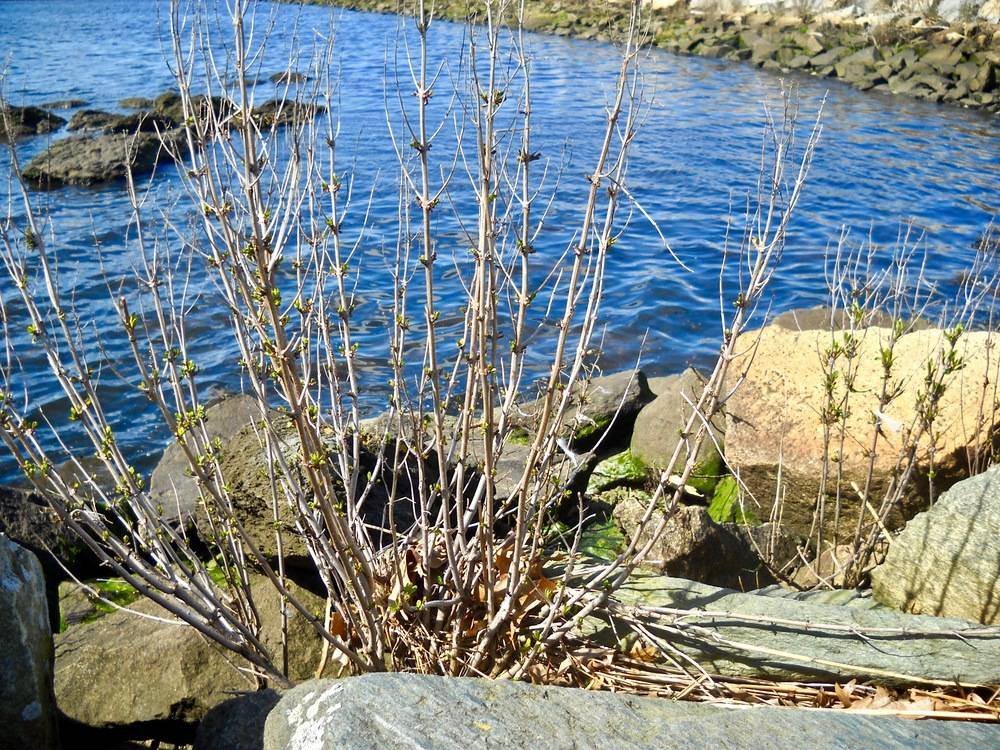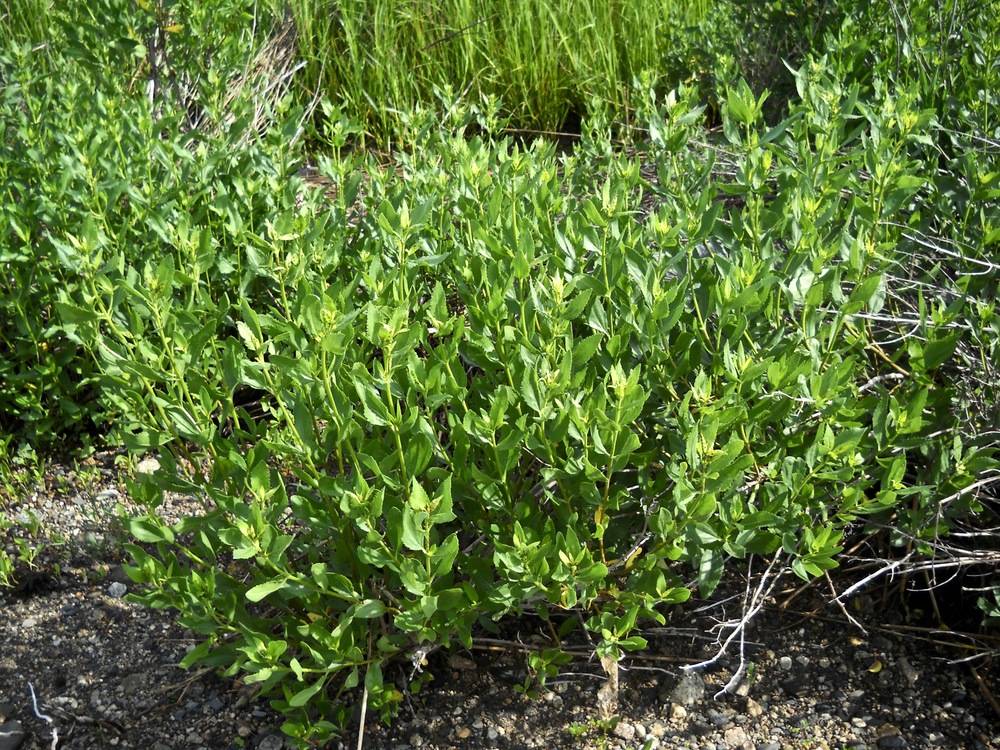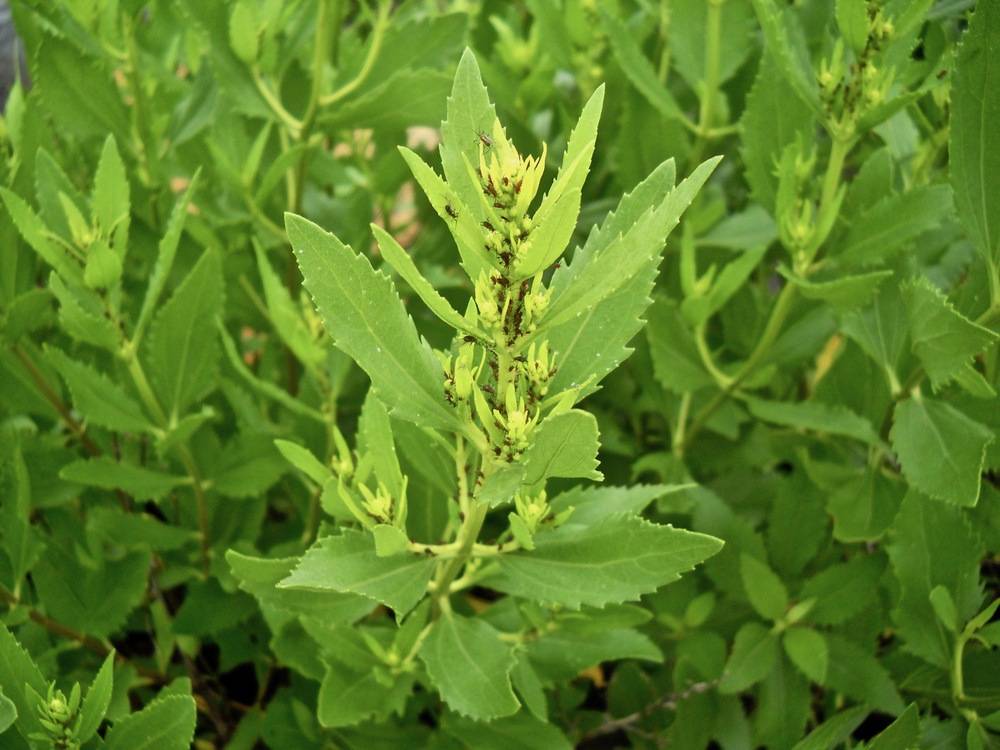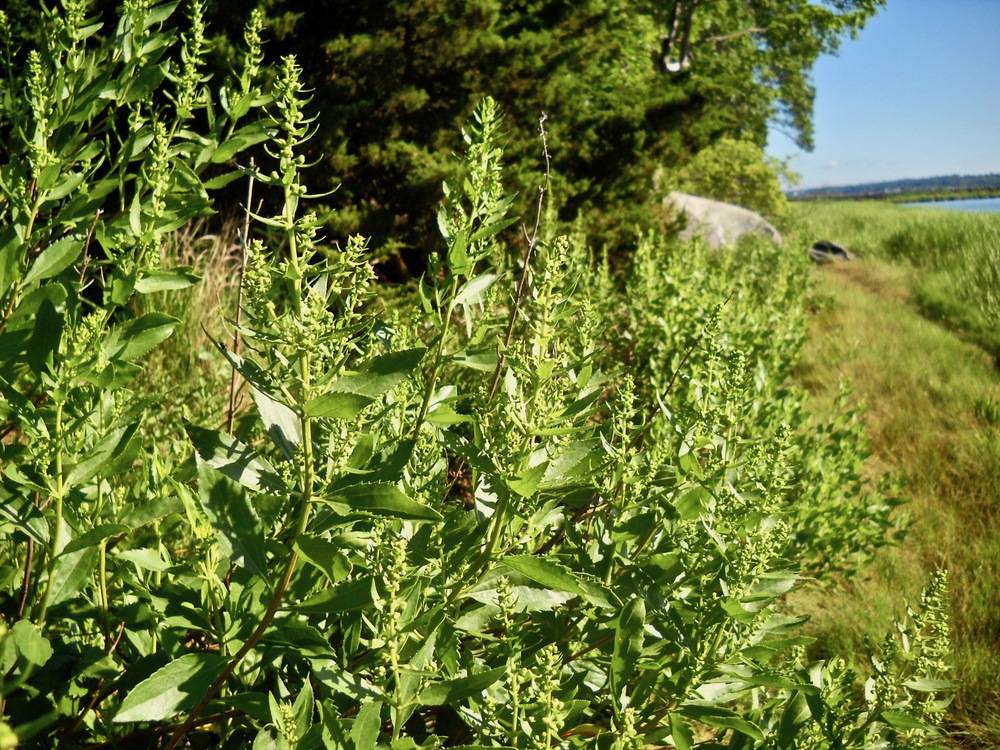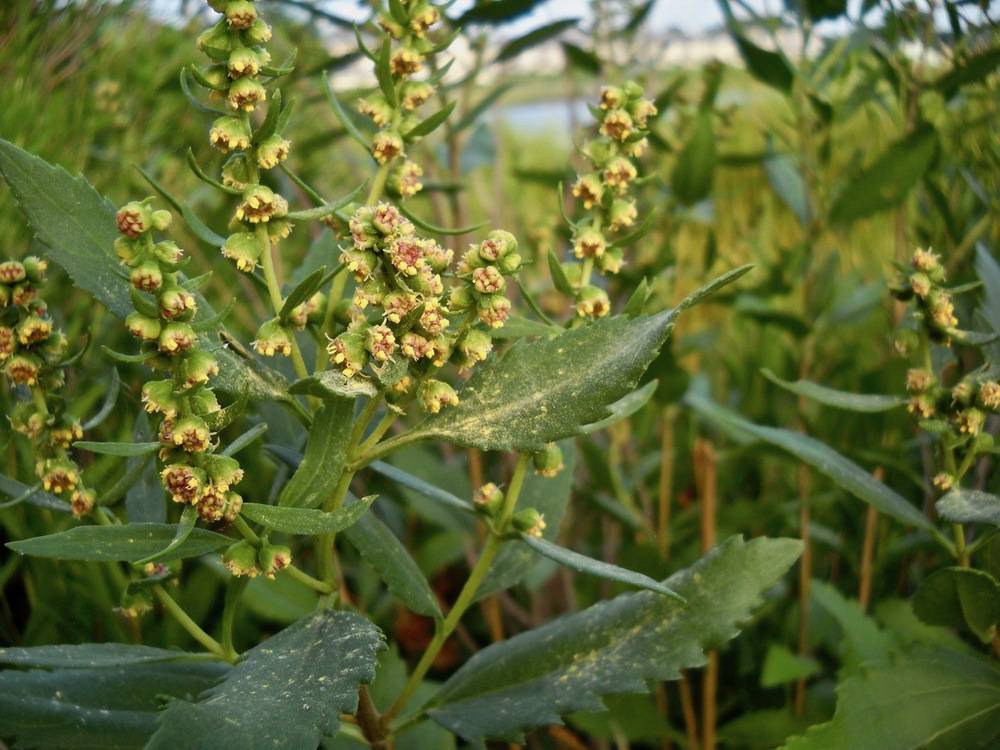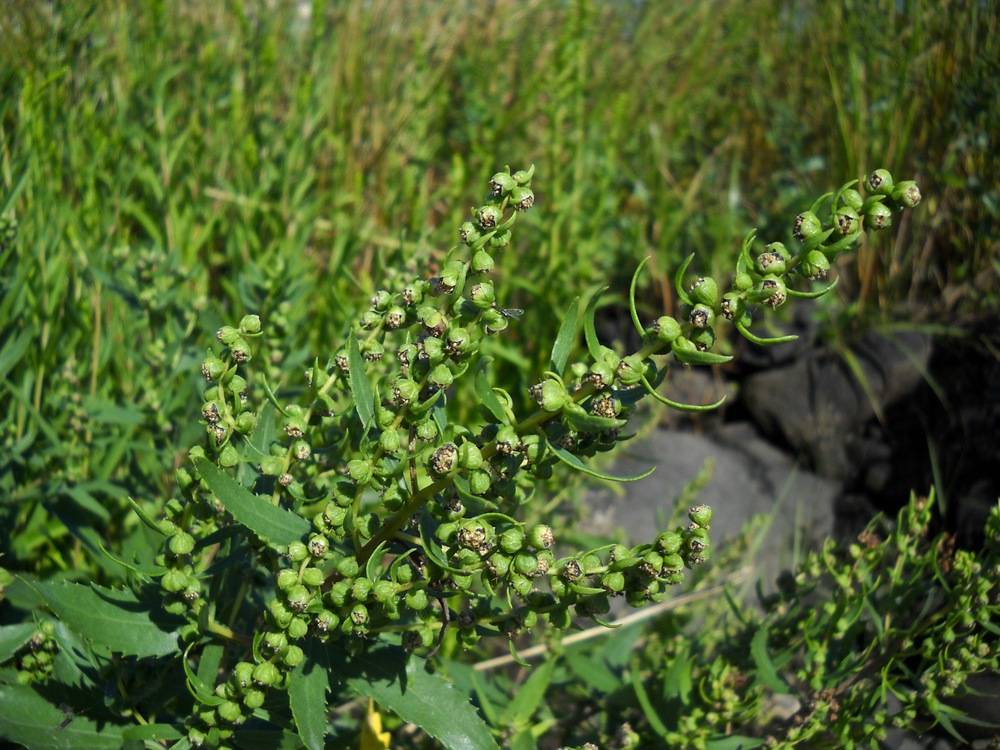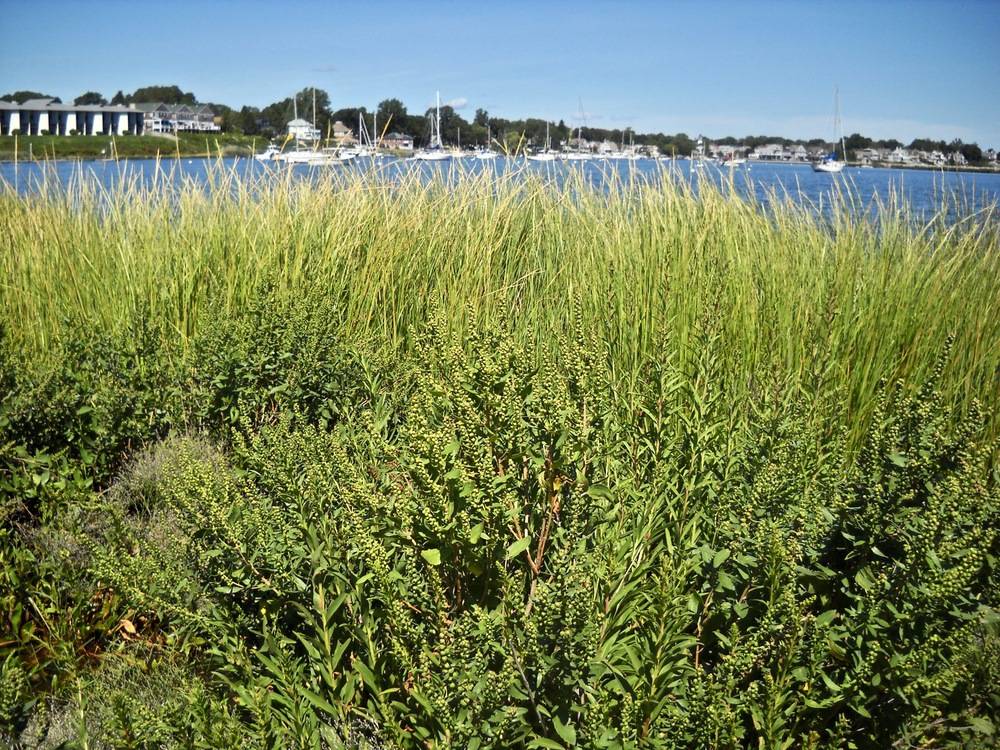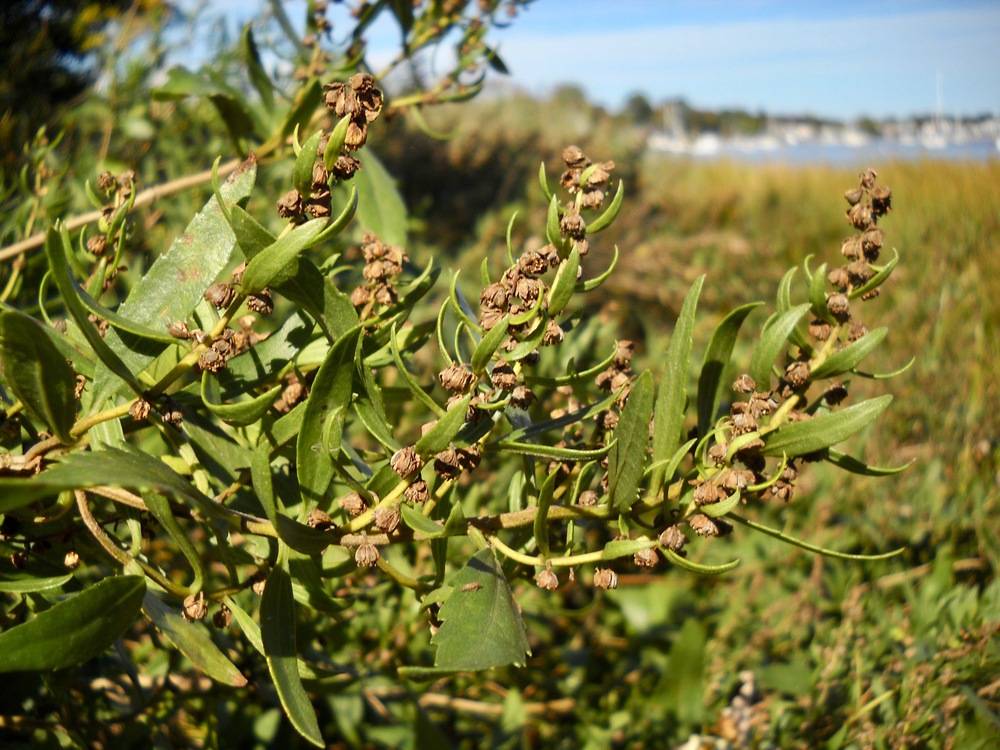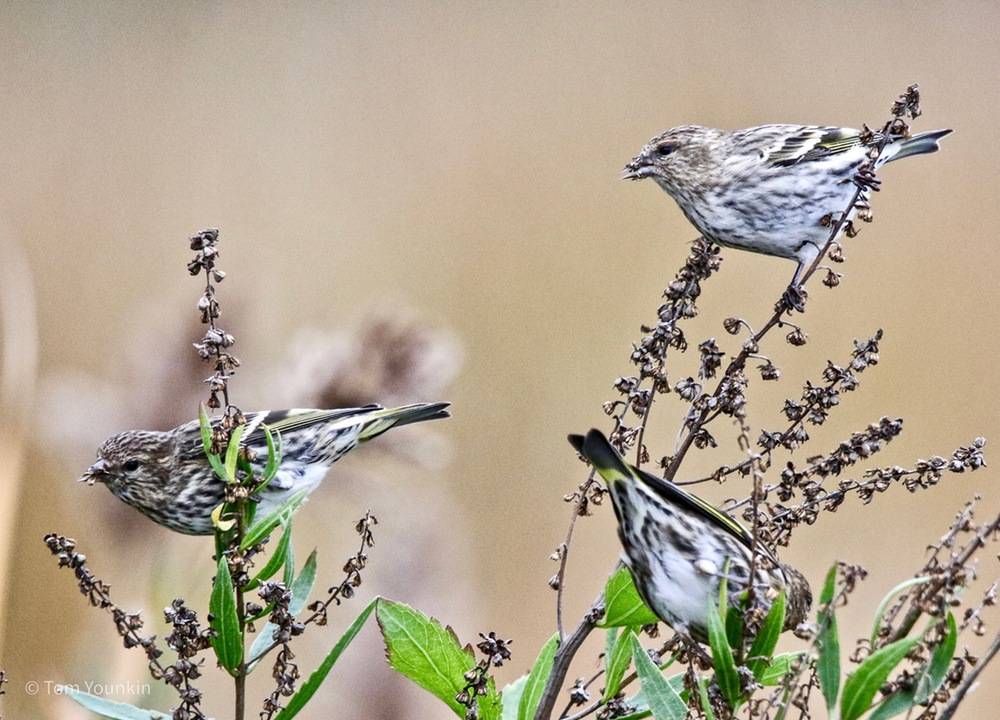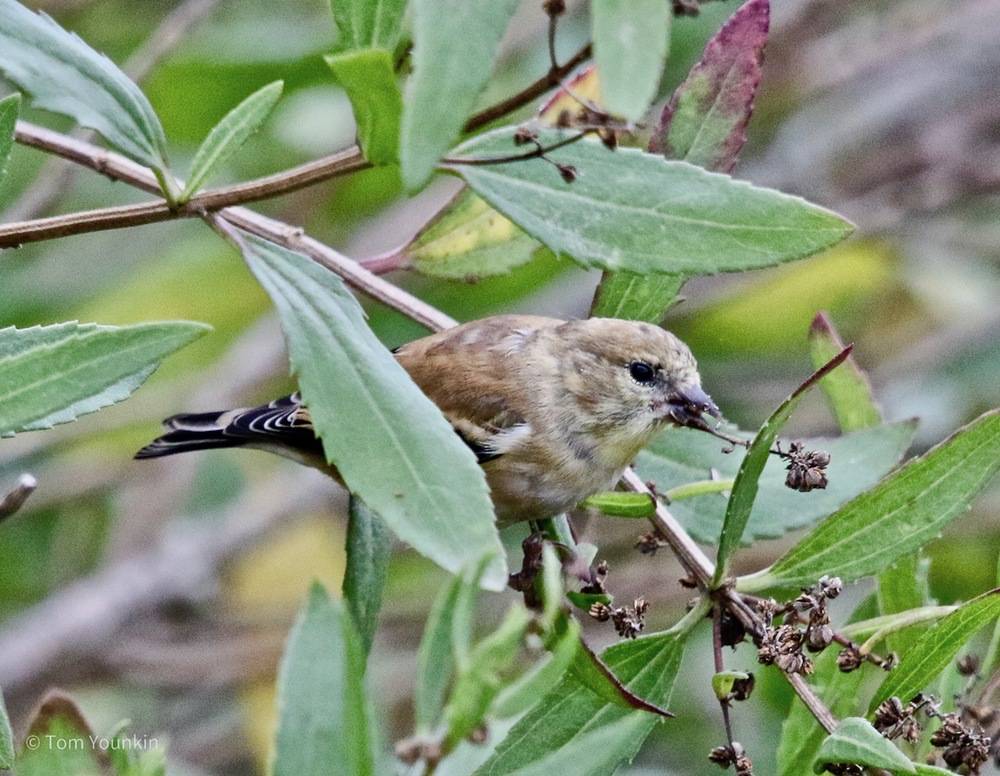maritime marsh-elder
Maritime marsh-elder is a shrub native to the coastal marshes of eastern North America from Nova Scotia southwards. It tolerates salinity but not flooding so it grows best in soil near the limits of high tide but will not survive in soil that is flooded 30% of the time. It is thus an effective indicator of the extent of tidal inundation in a salt marsh.
At Salter Grove, bands of this shrub grow along the Marsh Trail, both sides of the causeway, the landward side of the breakwater, and the western shoreline of Rock Island. The root system of these plants stabilizes the soil in which they grow. The stems provide shelter for small birds throughout the year, and for small mammals trapped by extremely high tides.
Although it is classified as a perennial, cross sections of the woody stems suggest a longevity of less than 6 years for above-ground growth. This would explain why plants often look like they are diseased with so many dried and broken branches during the winter but become vigorous shrubs fully loaded with succulent leaves again the following growing season.
Unlike other species of the aster family (daisy, dandelion, goldenrod, hawkweed, sunflower) that produce bursts of cheerful white and yellow flower heads, maritime marsh-elder produces easily missed spikes of green flower heads. This matters little to the birds like Pine Siskins and the American Goldfinch that come to feast on ripe fruits in the fall when there is little else to eat.
For more information:
https://gobotany.nativeplanttrust.org/species/iva/frutescens/
https://archive.epa.gov/aed/aed_archive_02/web/pdf/thursbyabdelrhman2004.pdf
https://plants.usda.gov/factsheet/pdf/fs_ivfr.pdf
https://en.wikipedia.org/wiki/Iva_frutescens
http://capemaywildlife.com/_templates/group_greencomposites.html

